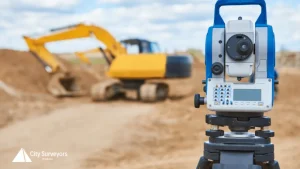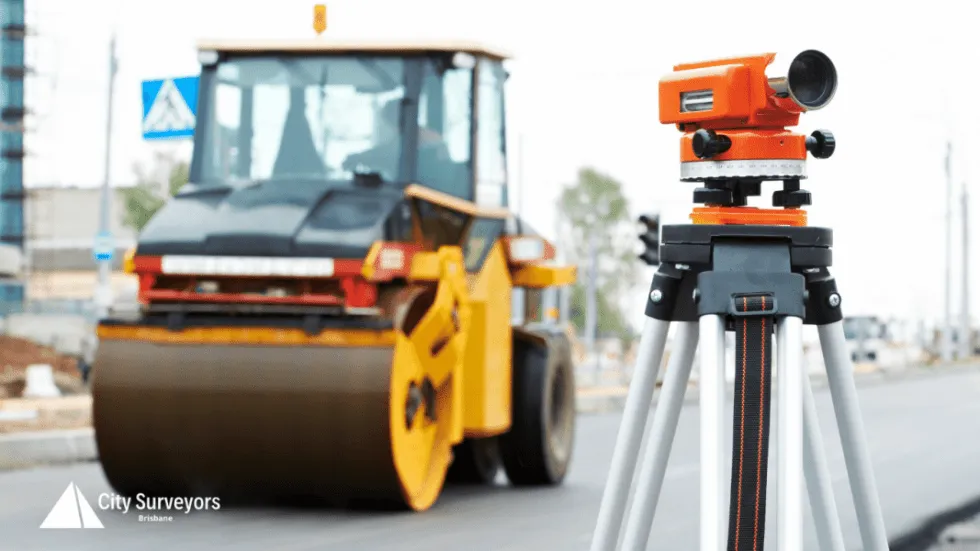Pinpoint Your Property Limits with Confidence
Knowing where your property boundaries are located is crucial for any landowner in Brisbane. A boundary survey can help you avoid disputes with neighbours, ensure proper fence placement, and comply with local building regulations. Getting a boundary survey done by a registered surveyor is the most accurate way to determine the exact limits of your land.
Boundary surveys aren't just for new property owners. Even if you've owned your land for years, changes in the area or outdated survey information could affect your property lines. A current survey can give you peace of mind and protect your interests if any questions about boundaries come up.
You might need a boundary survey when building a fence, planning an extension, or settling a disagreement with a neighbour. It's a smart investment that can save you time, money and stress in the long run. By hiring a professional surveyor, you'll get a clear picture of your property boundaries and avoid potential legal issues down the track.

Understanding Boundary Surveys
Boundary surveys play a key role in property ownership. They give you clarity about your land's limits and help avoid disputes with neighbours. Let's look at what these surveys involve and why they matter.
Definition and Importance
A boundary survey is a detailed check of your property's edges. It shows exactly where your land starts and stops. This survey is crucial when you:
- Buy or sell land
- Build near property lines
- Split up a larger piece of land
- Have doubts about fence locations
Getting a boundary survey helps you:
- Know what you own
- Avoid fights with neighbours
- Follow building rules
- Protect your property rights
Legal Framework in Australia
In Australia, boundary surveys follow strict rules. Each state has its own laws about how surveyors work. But all aim to keep property records clear and correct.
Key points about Aussie boundary surveys:
- Only registered surveyors can do them
- Results get filed with local councils
- They're based on past surveys and records
- Surveys must meet set accuracy standards
The Surveying and Spatial Information Act guides NSW surveyors. Other states have similar laws to ensure quality work.
Roles of a Licensed Surveyor
Licensed surveyors do more than just measure land. Their job includes:
- Checking old records and maps
- Using special tools to measure land
- Placing markers at property corners
- Drawing up detailed survey plans
- Giving expert advice on boundary issues
Surveyors also:
- Help solve boundary disputes
- Work with lawyers on property matters
- Update land records when needed
Their skills ensure your property lines are spot on. This gives you peace of mind about what you own.
Preparing for a Boundary Survey
Getting ready for a boundary survey takes some planning. You'll need to gather information, find the right professional, and decide what you want done. These steps will help make sure your survey goes smoothly.
Researching Property Records
Start by looking up your property records. Go to your local council or land registry office. Ask for copies of your property deed, past surveys, and any maps of the area. These documents can show old boundary markers and give clues about where your property lines are.
Check if your neighbours have had recent surveys done. Their results might affect your boundaries. If you can, talk to long-time residents. They might remember old fences or landmarks that marked property lines years ago.
Make a list of any changes to the land since the last survey. New buildings, fences, or landscaping can all impact boundary lines. Having this info ready will help your surveyor.
Selecting a Surveying Professional
Choose a licensed land surveyor for your boundary survey. Ask friends or your estate agent for recommendations. You can also check with your state's surveying board for a list of qualified professionals.
Get quotes from at least three surveyors. Ask about their experience with properties like yours. Make sure they're insured and can provide references.
When you talk to surveyors, ask about their methods. Modern tech like GPS can make surveys more accurate. But some situations might need traditional tools too. Pick someone who can explain their process clearly.
Don't just go for the cheapest option. A good survey is worth paying for. It can save you from costly disputes later on.
Determining the Scope of Work
Decide what you need from your survey. Are you just marking property lines? Or do you need a detailed map for building plans? Tell your surveyor exactly what you want.
If you're planning to build, you might need extra measurements. Things like the distance from your house to the property line can be important. Let your surveyor know about any future plans for your land.
Ask about any extra services the surveyor offers. Some can check for easements or rights of way on your property. Others might be able to help with council regulations.
Be clear about what you'll get at the end. Will you receive a written report? Digital files? Physical markers on your land? Make sure you understand what's included in the price.
The Process of Conducting a Survey
A boundary survey involves several key steps to accurately determine property lines. Surveyors use specialised tools and methods to map out the exact boundaries of your land.
Initial Consultation
You'll start by meeting with a licensed surveyor. During this chat, you'll discuss:
- Your property details
- Reasons for the survey
- Any boundary concerns
- Existing documents like deeds or maps
The surveyor will explain the process and give you a quote. They'll also set a timeline for the work.
It's crucial to share all relevant info about your property. This helps the surveyor plan their work and avoid surprises later.
Fieldwork Procedures
Once you've agreed to the survey, the fieldwork begins. The surveyor will:
- Visit your property
- Use GPS and other tools to take measurements
- Look for existing boundary markers
- Check nearby properties for reference points
This step can take a few hours to several days. It depends on your property's size and complexity.
The surveyor might need to dig small holes or clear some vegetation. They'll always try to minimise any disruption to your land.
Analysis and Report Compilation
After the fieldwork, the surveyor heads back to the office. They'll:
- Review all collected data
- Compare findings with official records
- Create detailed maps of your property
- Write up a full report
This report will show your exact property lines. It might also note any encroachments or boundary issues.
You'll get a copy of this report and any maps. The surveyor can explain the results to you if needed. Keep these documents safe. They're valuable for future property dealings or disputes.
Understanding Your Survey Results
Survey results provide crucial details about your property boundaries. Knowing how to interpret them helps you avoid disputes and make informed decisions about your land.
Reading and Interpreting Survey Plans
Survey plans use symbols and technical terms to show property details. Look for the north arrow to orient yourself. The scale helps you measure distances accurately. Boundary lines are often shown as thick black lines. Easements or encroachments may appear as dotted lines or shaded areas.
Pay attention to dimensions and angles. These are key for understanding your property's shape and size. Survey plans also show important landmarks like buildings, fences, and trees.
Surveyors use specialised symbols for different features. A legend on the plan explains what each symbol means. If you're unsure about anything, ask your surveyor for help.
Identifying Boundaries and Markers
Boundaries are marked by physical objects on your land. These might be:
- Pegs or stakes
- Fence posts
- Marked trees
- Concrete pillars
Surveyors use these markers to show where your property starts and ends. The survey plan will show where these markers are located.
Some markers might be hidden or removed over time. If you can't find a marker, check the measurements on your plan. You can use these to work out where the boundary should be.
Remember, only licensed surveyors can place or move boundary markers. Don't try to do this yourself.
Dealing with Discrepancies
Sometimes survey results might not match what you expected. This can happen for a few reasons:
- Old fences might not be on the true boundary line
- Previous surveys might have had errors
- Natural changes to the land over time
If you find a discrepancy, don't panic. Talk to your surveyor first. They can explain why there's a difference and what it means for you.
For major issues, you might need to speak with your neighbours. A surveyor can help mediate these talks. In some cases, you may need legal advice to resolve boundary disputes.
Always keep your survey results safe. They're important documents for future reference and if you ever sell your property.
Post-Survey Considerations
After completing a boundary survey, you'll need to take several important steps. These include addressing any fencing issues, resolving disputes with neighbours, and planning for future property use.
Fencing and Encroachments
Once you have your survey results, check if any fences or structures cross property lines. Look for trees, gardens, or driveways that may encroach on your land or your neighbour's.
If you find encroachments, talk to your neighbour calmly. Suggest moving fences or structures to match the correct boundaries. For major issues, you may need legal help to sort things out.
Consider putting up new fencing along the correct lines. This can prevent future mix-ups about where your property ends. Make sure to follow local rules about fence height and materials.
Resolving Neighbour Disputes
If the survey reveals boundary issues, stay calm when talking to your neighbours. Show them the survey results and explain the situation clearly.
Try to work out a fair solution together. This could mean moving a fence, trimming overhanging trees, or removing structures on the wrong side of the line.
If you can't agree, think about using a mediator. They can help you find a solution without going to court. As a last resort, you might need legal advice to protect your property rights.
Keep records of all talks and agreements with your neighbours. This can be useful if issues come up again later.
Future Land Use and Development
Your boundary survey is key for planning future projects. Use it when thinking about adding extensions, new drainage, building sheds, or putting in pools.
Check local rules about how close to property lines you can build. Some areas require setbacks, which are spaces you must leave between structures and boundaries.
If you want to subdivide your land, your survey will be crucial. It shows exactly what you own and helps with planning new lot sizes.
Keep your survey results safe. You'll need them for any future sales or if you refinance your home. Consider getting digital copies to store securely online.
Maintaining Boundary Awareness
Keeping your property boundary knowledge up-to-date is crucial. Regular checks and record updates help avoid future issues.
Updating Records
Make sure your property records are current. When you get a new survey done, file the results with your local council. Keep copies of all boundary-related documents in a safe place. This includes:
- Survey reports
- Property deeds
- Agreements with neighbours
Update your records if you make changes to your property. This might include:
- Building a fence
- Adding an extension
- Changing landscaping near boundaries
Regular Review and Re-Survey
Check your property boundaries every few years. Look for changes like:
- Shifted fences
- New structures near the boundary
- Trees that have grown over the line
If you spot issues, talk to your neighbours. You might need a new survey if:
- You can't find boundary markers
- There's been major construction nearby
- It's been many years since the last survey
A fresh survey can catch problems early. It's cheaper to fix small issues before they grow. Ask a licensed surveyor to help if you're unsure about your boundaries.
Brisbane City Surveyors are the Team To Trust!
Frequently Asked Questions
Boundary surveys involve several key aspects that property owners often have questions about. Understanding the process, marks, and resources available can help you navigate property boundaries more effectively.
How can I locate the property boundaries in Queensland online?
You can use the Queensland Globe online mapping tool to view property boundaries. It shows aerial imagery and cadastral information. The tool is free to access through the Queensland Government website.
What distinguishes boundary marks from survey marks?
Boundary marks show the corners of your property. Survey marks are reference points surveyors use to measure from. Boundary marks are often pegs or nails, while survey marks can be discs or plaques set in concrete.
Are there permanent survey marks in Queensland, and how can they be identified?
Yes, Queensland has permanent survey marks. They're usually brass plaques or discs set in concrete. You can spot them in footpaths, kerbs, or on rocks. The Department of Resources maintains a register of these marks.
What are the different types of survey marks used in property surveying?
Surveyors use various marks. These include:
- Iron pins or pipes
- Concrete monuments
- Wooden stakes
- Nails with washers
- Plastic caps on rebar
The type used depends on the location and ground conditions.
How can I obtain survey plans in Queensland at no cost?
You can access free survey plans through the Queensland Government's SmartMap service. It lets you search by lot number, plan number, or address. You can view and download plans as PDFs.





Your insights on the importance of boundary surveys resonate deeply, especially when considering how crucial property lines can be in maintaining good neighborly relations. I recently went through a similar situation when I decided to build a new fence. Initially, I thought I could rely on an old survey I had, only to find out that several properties in my area had undergone changes over the years. It was a bit of a wake-up call, emphasizing how vital it is to have accurate, up-to-date information about property limits.
Your experience really highlights something important that often gets overlooked until we find ourselves in a similar situation. It’s fascinating how land and property dynamics can shift over time, sometimes in surprising ways. I’ve read about neighborhoods where property lines got muddled due to long-established trees or changes in municipal planning. It can create quite the headache, especially when you’re trying to maintain harmony with your neighbors.
It’s interesting to hear about your experience with the fence project and how an old survey led to unexpected complications. This really highlights a common oversight that many of us make. People often think of surveys as a one-and-done deal, but our properties can change quite a bit over time due to factors like neighbor disputes, new constructions, or even simple boundary adjustments.
You bring up such an important point about boundary surveys! When I moved into my house in Brisbane, I was surprised by how many neighbors had disputes over property lines. It really highlighted for me just how crucial it is to have clear and accurate surveys, especially as properties and neighborhoods evolve over time.
You brought up some really important points about the significance of knowing your property boundaries, especially in a city like Brisbane where space can be quite tight and disputes with neighbors can easily arise. I remember when my partner and I first moved into our home; we were so excited about the idea of starting from scratch and maybe even building a garden. But even the small task of figuring out where to plant things correctly led us down a rabbit hole of wanting to ensure we weren’t overstepping any boundaries.
You’ve touched on such an important topic here! I completely agree that having a boundary survey done is essential, not just for new property owners but for everyone. I had a neighborly dispute a few years back over a fence placement that stemmed from unclear property lines. It was frustrating and really highlighted how crucial it is to have definitive boundaries.
You raise an important point about boundary surveys that many property owners tend to overlook. I recently had a situation where a neighbor’s fence encroached slightly onto my property, and it became a real hassle to resolve. An updated boundary survey would have provided clarity sooner and perhaps avoided a lot of unnecessary tension.
You’ve highlighted such an important aspect of property ownership that often gets overlooked. I’ve personally encountered situations where unclear boundaries led to frustrating misunderstandings with neighbors. It’s easy to assume you know your limits, but even minor changes in the environment, like new constructions nearby or even trees growing oddly, can shift perceptions.
It’s interesting to think about how boundary surveys play such a crucial role in preserving harmony among neighbors. I remember a friend who faced a real headache when building a fence, only to discover that their property line was misaligned due to an outdated survey. It not only led to tension between them and their neighbor but also costly legal disputes. Investing in a current boundary survey is definitely a proactive step that can spare everyone from unnecessary stress.
It’s true that boundary surveys can really make a difference in neighborly relationships. Your friend’s experience highlights how easily misunderstandings can arise when property lines aren’t clear. It’s not just about knowing where to put a fence; it affects access, landscaping, and even things like drainage.
Your insights into the importance of boundary surveys resonate deeply, especially as a current homeowner navigating the complexities of property ownership in Brisbane. It’s amazing how a seemingly small detail like property lines can have significant implications on everything from fence placement to future renovations. I recently went through the process of getting a boundary survey, and it truly emphasized how essential clarity is in avoiding potential disputes with neighbors.
I can totally relate! I’ve been ‘that neighbour’ who thought their fence was perfectly fine until my other half decided to investigate boundaries with a tape measure. Let’s just say, a surprise ‘Welcome to the Neighbours’ BBQ became a lesson in property lines! 😂 It’s true, knowing where your land begins and ends can save so much hassle—and legal fees!
Ah, the good old property boundary survey—a rite of passage for homeowners that feels almost like a fancy adulting badge of honor! I’ve wandered through the realms of land ownership myself, and let me tell you, knowing where your property ends and your neighbor’s begins can save you from those awkward over-the-fence conversations. You know, the ones where you both try to pretend you’re okay with each other’s strange hobbies (like collecting garden gnomes or assembling a mini replica of Stonehenge)!
This topic truly hits home for me, as I’ve recently gone through the process of getting a boundary survey for my property. I was surprised to learn how outdated surveys can lead to misunderstandings, even among long-time neighbors. It’s enlightening to realize that boundary surveys not only define land ownership but also foster community harmony.
It’s interesting how often property boundaries can lead to unexpected conflicts. I remember helping a friend who had absurdly placed their fence just a few inches over the line, and it turned into months of back-and-forth with their neighbor. It really highlighted the importance of boundary surveys—especially when you’re living in areas with older properties that might not have clear documentation.
It’s interesting how much a boundary survey can impact not just property ownership but also community dynamics. I remember when my neighbor decided to put up a fence, and it turned into a minor saga over where the actual boundary lay. We eventually got a survey done, and it turned out that our guesswork had been way off. Seeing the actual limits helped maintain harmony, and it made everyone feel more secure in their own space.